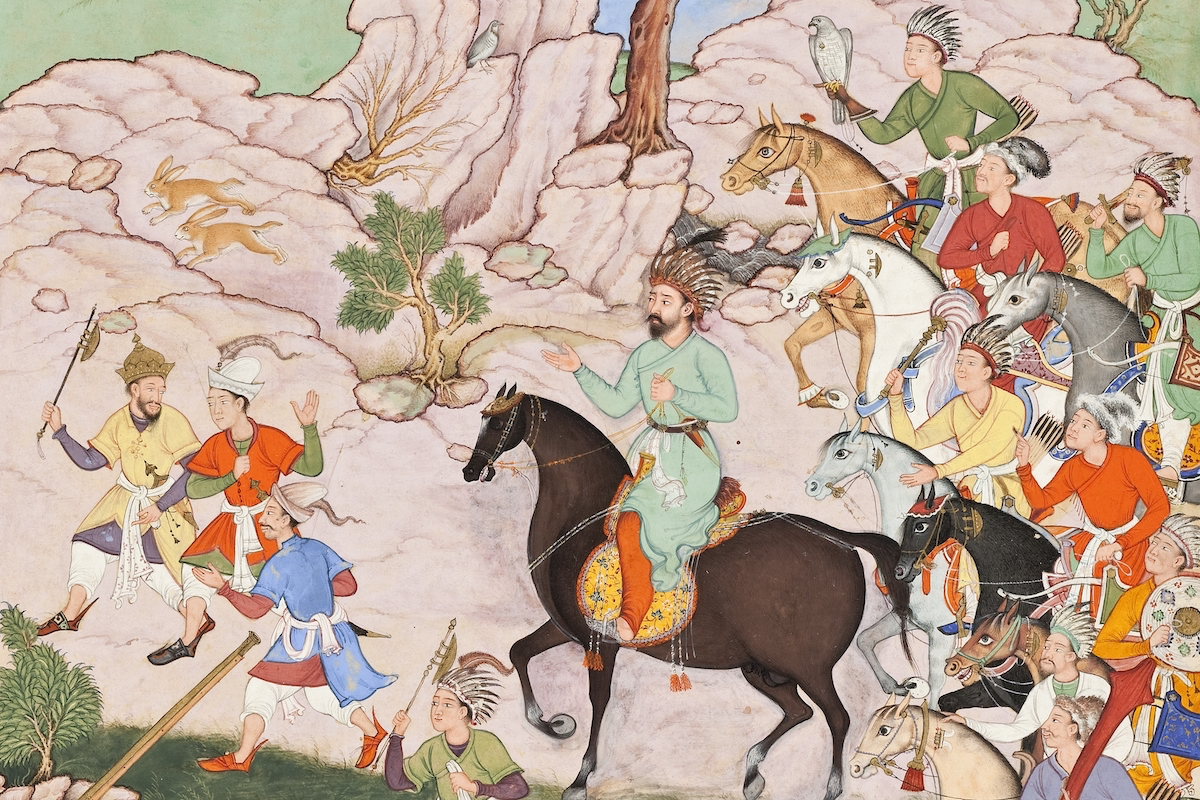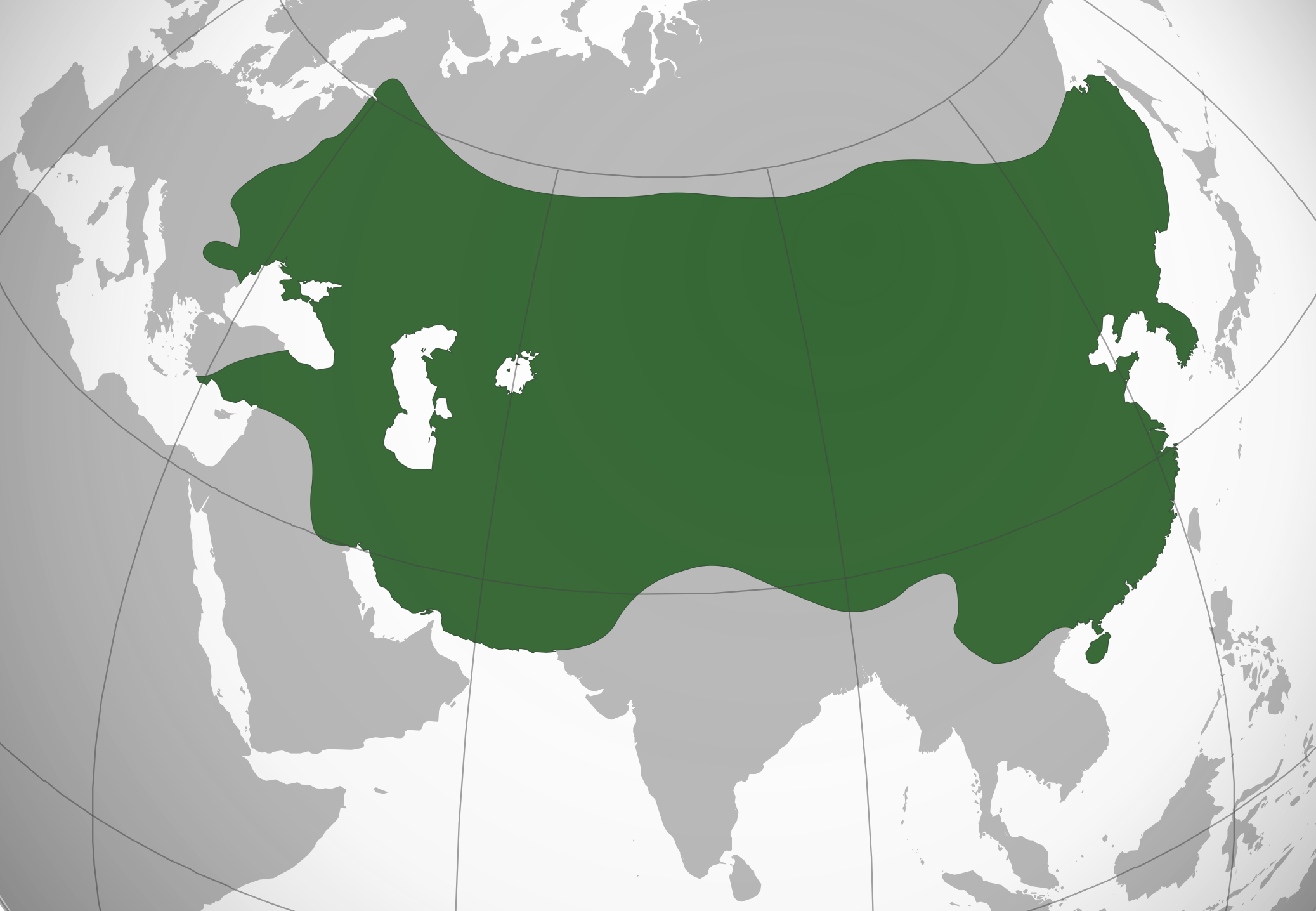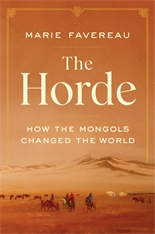History
How the (Much Maligned) Mongol Horde Helped Create Russian Civilization
The Jochid khans considered the Russian principalities part of their dominion.

If the great nomadic regime born from the Mongol expansion of the 13th century were projected on today’s maps, it would stretch across a region occupied by Ukraine, Bulgaria, Moldavia, Azerbaijan, Georgia, Kazakhstan, Uzbekistan, Turkmenistan, and Russia, including Tatarstan and Crimea. The history of this Horde is therefore a shared legacy. That legacy does not belong exclusively to the national narratives of any of these nation-states, narratives centered on linguistic, ethnic, and religious communities that had very different experiences with the Horde and today invest those experiences with a range of meanings. As a result, the historiography of the Horde has tended to depend very much on the standpoint of the historian. Where nationalisms solidified in opposition to Mongol rule, historians have told one kind of story; where nationalisms presume continuity with the Mongol past, historians have told another kind of story.

In Russian nationalist scholarship, the Horde is an alien entity with disruptive effects on the formation of the Russian nation. In the Soviet Union, the Russian experience of vassalage to the Horde was distorted, marginalized, and often simply erased from textbooks. Historians and archaeologists were not allowed to use the terms “Horde” or “Golden Horde.” Instead, the Mongol regime that conquered the medieval Russian principalities was called the “Tatar yoke.” But Tatars—a group often conflated with Mongols—and other Muslim peoples now living in the Russian Federation see the Horde’s rule as a formative period in their history. Indeed, the Islamization of the Eurasian steppes, Crimea, and Eastern Europe is one of the Horde’s most important legacies. Islam, as practiced in the Horde after the mid-13th century, was a unifying force in Central Asia.
The sweep of the Horde’s enduring Jochid regime across so many different peoples was enabled in part by its liberal style of rule. Like most empires, the Horde accommodated diverse religious communities. The toleration practiced by nomadic leaders reflected their respect for wide-ranging approaches to belief and superstition. Indeed, the Mongols readily adopted the spiritual practices of other steppe peoples before striking out into Eurasia with their eyes on conquest, so the idea that a single polity might accommodate multiple belief systems was not unfamiliar to them. Thus the Horde’s steppe descendants could embrace Islam even as they continued to practice their old spiritual traditions, conquered peoples faced no obstacles in practicing their traditions, and religious dignitaries visiting the Horde enjoyed protected status whether they were Muslims, Jews, Armenian Christians, Catholics, Russian Orthodox, or Pagans.
Toleration was a pragmatic option. As the Franciscan friar Iohanca put it in 1320, the Jochids “could not care less to what religion someone belongs as long as he performs the required services, pay tributes and taxes and satisfies his military obligations according to their laws.” Toleration also served power aims. In addition to allowing free practice of diverse religions, the Jochids provided special financial and legal protections for Christian and Muslim clergy because the Horde’s leaders knew that the support of religious elites would enhance Jochid legitimacy in the eyes of conquered peoples.
Some of the most significant beneficiaries of Jochid protections were Russian Orthodox clergy and institutions, which blossomed under Mongol rule. Russian scholars—whose work dominates historical writing about the Horde—have lately paid more attention to this process of development, moving beyond nationalist biases by asking questions that do not presuppose the oppressiveness of the supposed Tatar yoke. These scholars are reconciling Russia with the Islamic dimension of its past: their question is not how Russia survived the Horde, but how the Horde helped to create modern Russia.
English-language scholarship has been more likely to take for granted the Horde’s contributions to Russia’s development. In particular, the question of the Horde’s legacy has often been linked to the rise of Muscovy, the Grand Duchy of Moscow. The goal of this scholarship is to understand how the Horde influenced the institutions of Muscovite power and therefore of Moscow’s successor, imperial Russia.
The Russian principalities experienced extraordinary economic vitality during their vassalage to the Horde. New cities were built—as many as 40 in north-eastern Russia during the 14th century. Artisanal production grew dramatically and trade developed rapidly, bringing Eurasian long-distance commerce to the Baltic sphere, the far north, and small towns such as Moscow itself, which burgeoned only after the Jochids bestowed favor on Moscow’s leading family.

The Jochid khans prioritized fluidity in commercial markets and used their foreign policy to ensure the productivity of the fur and silver trades, which were essential to the development of Novgorod, one of the economic centers of the Russian principalities. When Russian princes and boyars objected to granting foreign traders access to their territory, the Jochids forced the Russians to relent, a move that proved extremely valuable to Russian development. At the same time, the Jochids granted Russian elites financial and legal protections that facilitated production in the orchards, fisheries, farms, and craft workshops those elites owned. The Jochid-dominated Eurasian trade network was a source of Russian wealth and therefore power.
If historians have so far failed to appreciate the influence of the Horde on the development of Russian power, they have also misunderstood the political relationship between the Horde and the Russians. Scholars have perceived the Russians as members of a “steppe frontier,” at the periphery of Jochid power, whereas in fact Russians were deeply enmeshed in the nomadic state. The Jochid khans considered the Russian principalities part of their dominion. The Horde took censuses of the people living in the principalities and taxed them. The Jochids did not impose direct rule over the Russians, but did closely supervise the grand prince of Vladimir, the highest-ranking figure in the Russian principalities. The principalities benefited from the khans’ military support, land grants, and tax exemptions. Protection for the Russian Orthodox clergy was a constant feature of Jochid politics. The clergy affirmed Jochid sovereignty and in return received lucrative financial benefits that contributed to the church’s thriving. Marriages between Jochid princesses and Russian princes strengthened connections between the Horde’s rulers and their vassals. The Jochids also rewrote the process of succession to the position of grand prince and eventually placed his throne in the hands of the Muscovites. The Jochids in many ways created Moscow’s authority, fundamentally altering the course of Russian history.
* * *
From the time of his enthronement in 1462, Grand Prince Ivan of Moscow didn’t pay tribute to the Horde. And by the late 1470s, Ahmad Khan, who’d seized power in the Horde in 1465, was ready to punish him for his neglect. Ahmad led the Volga horde, the symbolic center of the Jochid realms but no longer the focal point where the various hordes met for collective gatherings. He had a clear ambition to change this situation—to revive the imperial policy of previous khans, as demonstrated by his energetic diplomacy: Ahmad allied with Venice and the Lithuanians against the Ottomans, who were threatening Jochid positions in Crimea and the lower Danube. But internal conflicts were keeping Ahmad from accomplishing his objectives. In 1478, Crimea fell into the hands of Mengli Giray, another Jochid khan, who was backed by the Ottomans. And Ivan was working to unify the lands north of the Oka River in order to strengthen Moscow’s position. Ahmad needed to act quickly, lest his aspiration go unfulfilled. In 1479, he sent his tax collectors to Moscow to take what belonged to him, including arrears, but the grand prince refused to obey. It would take a war to bring Ivan back into line. The lines of allegiance were drawn: Moscow and Crimea against Ahmad and Poland-Lithuania.

In spring 1480 Ahmad and his warriors made camp on the banks of the Ugra River, about 150 miles south of Moscow, to await reinforcements promised by Kazimierz, the king of Poland-Lithuania. A Russian army was arrayed on the other side of the river. The two sides waited for months; then, in November, Ahmad’s forces departed. Ahmad Khan had learned that the princes of south-western Russia had rebelled against Kazimierz and, led by Mengli Giray, were heading toward Sarai (in the Volga region of what would later be southern Russia). Fearful of being trapped between Ivan’s army and the south-western princes, and recognizing that the approaching winter would subject his troops to shortages of food and clothing, Ahmad chose to withdraw. Yet, as was so often the case when Mongols retreated, there was a strategy at work. Ahmad believed he had in fact accomplished what he needed to: that he had so intimidated Ivan that the grand prince would pay the tribute and beg for peace. And Ivan was indeed worried. He wrote to his ally Mengli Giray in 1481, “Ahmad Khan came against me, but all-merciful God wanted to save us from him and did so.”
In Russian scholarship, the “Stand on the Ugra River” is often presented as the event that ended the Tatar yoke in the Russian principalities. Yet, interestingly, in 1480 no Russian source claimed to be freed from the Tatar yoke. In the 15th century, the Grand Duchy of Moscow did not reject the political legacy of the Mongols. Quite the opposite: Moscow was an expanding state that looked to the Horde as a source of its legitimacy and its power. It would be another three-quarters of a century before the Stand on the Ugra River was perceived as a significant date in Muscovite history. Only in distant hindsight, after much political change in Russia, did Russians come to see the stand as the moment when their nation at last turned back the Mongols’ supposedly damaging and ideologically suspect form of rule. Later historians even understood the stand as the end of the Horde.
Next to the Ugra River event, historians have pointed to other dates that signified the end of the Horde: 1502, when Mengli Giray defeated Ahmad’s son and successor in battle, and 1552–1556, when Ivan IV annexed Kazan and Astrakhan and thereby asserted a tenuous control over the Volga Valley. The 1502 battle, however, was a contest among Jochids for control of the area around Sarai, which the nomads knew as Takhteli, the region of the throne and a sacred place. A fight among Jochids, by itself, could hardly signify the end of the Horde. As for Ivan IV’s precarious conquests of Kazan and Astrakhan in the 1550s, by that time, the Jochi hordes had already left the lower Volga, having moved on to different terrain.
Whatever date we choose to mark the end of the Horde, its lingering influence was clear even among the Muscovites. As historian Thomas Allsen puts it, “The Moscovite embrace of the Mongol legacy … was fraught with contradiction.” On the one hand, Russians learned to disdain the Tatar yoke. On the other hand, Russian rulers never hesitated to call upon the Horde as its predecessor under the rubric of translatio imperii—the idea that the legitimacy of one empire may be passed to the next. Much as German kings saw their Holy Roman Empire as a successor to Rome and Byzantium, the Muscovites claimed to inherit the Horde’s imperial right of conquest. Thus it was only when Ivan IV conquered the Volga Valley that he began to call himself an emperor. Specifically, he took the title of tsar, which Russians had hitherto used to describe and address the Horde’s khans. Indeed, to further Moscow’s claim as successor of the Jochid empire, Ivan IV always asked European rulers to include among his titles “tsar of Kazan and Astrakhan.” In the burgeoning Russian Empire, the Horde lived on as an important political force.

Excerpted, with permission, from The Horde: How the Mongols Changed the World, by Marie Favereau. Published by the Belknap Press of Harvard University Press. Copyright © 2021 by Marie Favereau.






